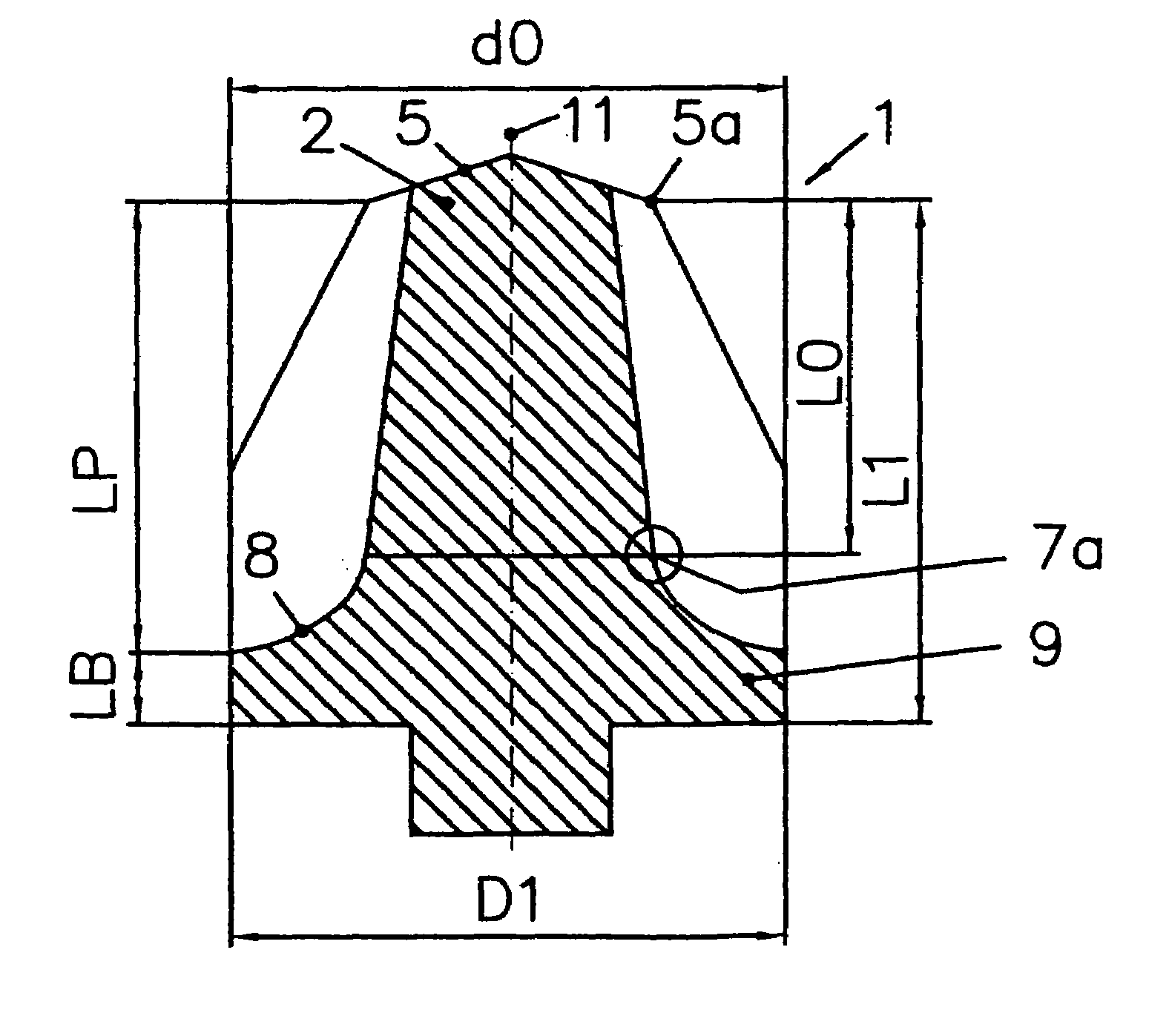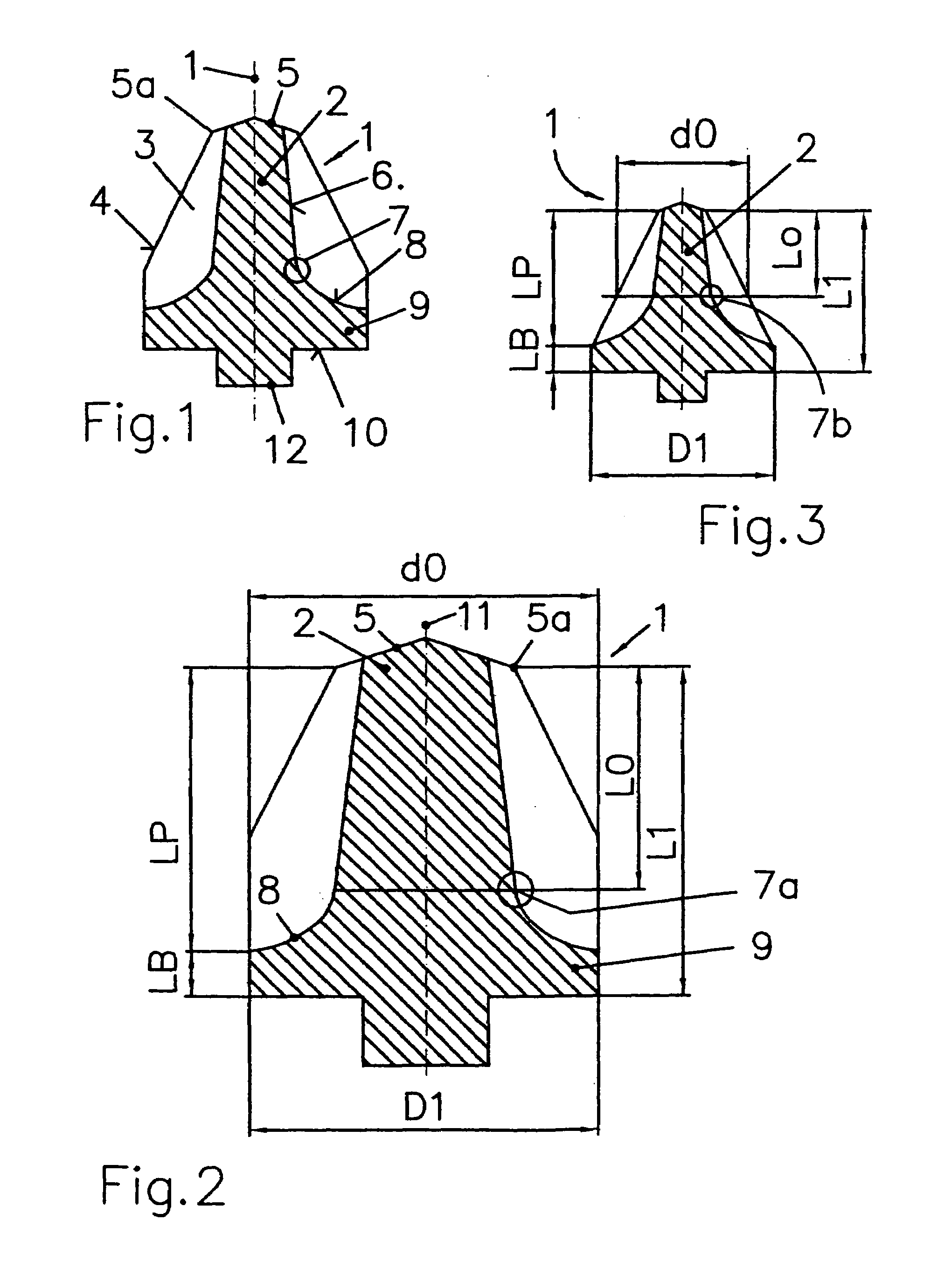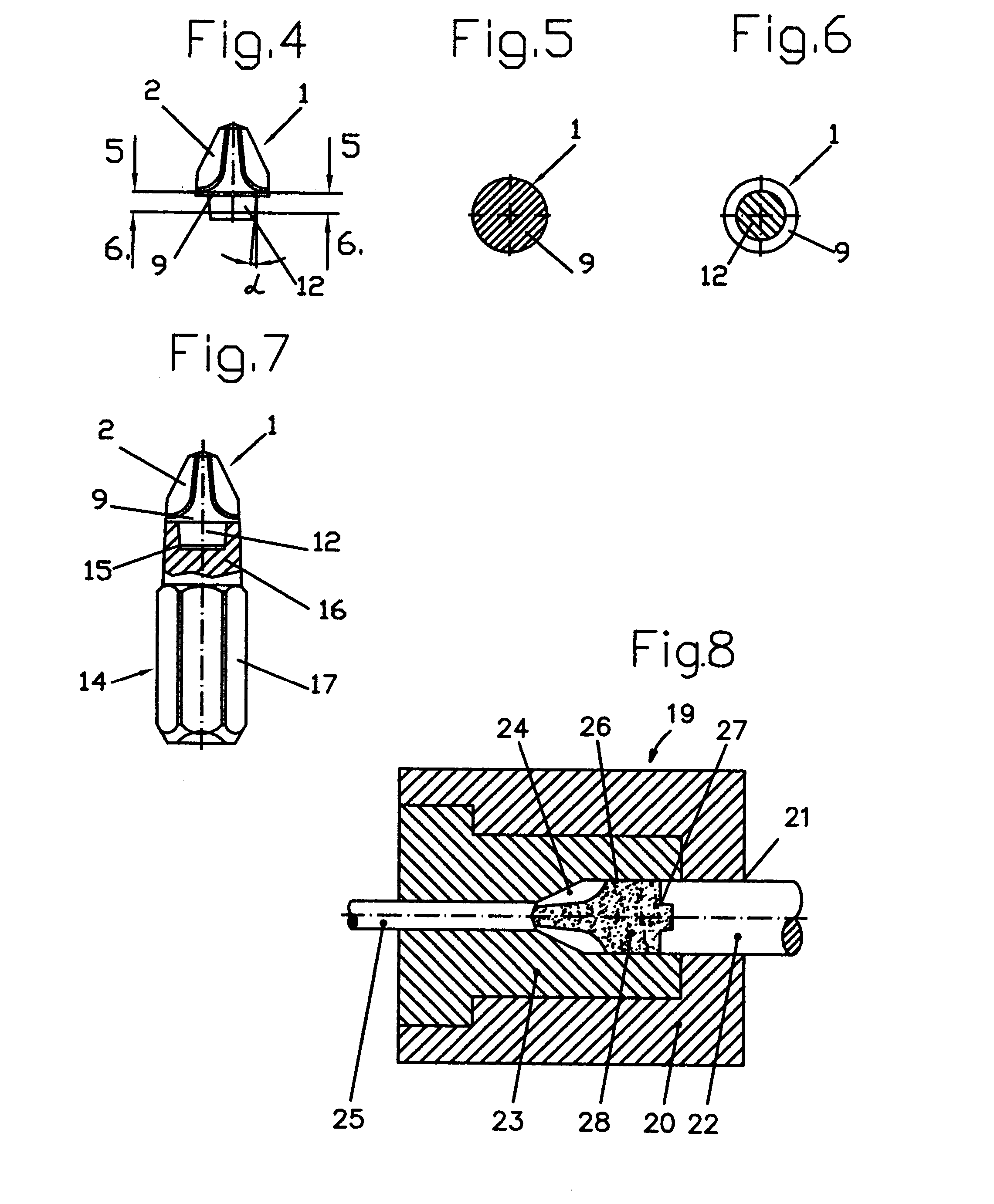Screwdriver bits
a screwdriver and bit technology, applied in screwdrivers, wrenches, manufacturing tools, etc., can solve the problems of reducing pressure, difficult inability to achieve uniform and superior densification, etc., to achieve uniform, precise and superior densification, superior resistance to bending moments, and superior densification
- Summary
- Abstract
- Description
- Claims
- Application Information
AI Technical Summary
Benefits of technology
Problems solved by technology
Method used
Image
Examples
Embodiment Construction
[0052]FIG. 1 shows a front section 1 of a screwdriver bit according to the invention. On its front end, the front section 1 is provided with a penetrating section 2 in the form of a conventional cross-tip that serves for penetrating into the corresponding interior profile of a cross-head screw. The cross-tip contains four ribs or lands 3 that are arranged in cruciform fashion and have upper edges 4 that conically converge toward the front and end at a flattened end section 5 that is insignificant for the purpose of the invention. Cruciform flutes or grooves with groove bottoms 6 that also extend conically up to the end section 5 are arranged between the lands 3, where said groove bottoms are curved or beveled radially outwardly on the side that faces away from the end section 5 beginning at a point 7 that defines the rear end of the penetrating section 2, such that the groove bottoms form a section referred to as the continuation 8 below.
[0053]A base section 9 that, for example, is ...
PUM
 Login to View More
Login to View More Abstract
Description
Claims
Application Information
 Login to View More
Login to View More - R&D
- Intellectual Property
- Life Sciences
- Materials
- Tech Scout
- Unparalleled Data Quality
- Higher Quality Content
- 60% Fewer Hallucinations
Browse by: Latest US Patents, China's latest patents, Technical Efficacy Thesaurus, Application Domain, Technology Topic, Popular Technical Reports.
© 2025 PatSnap. All rights reserved.Legal|Privacy policy|Modern Slavery Act Transparency Statement|Sitemap|About US| Contact US: help@patsnap.com



